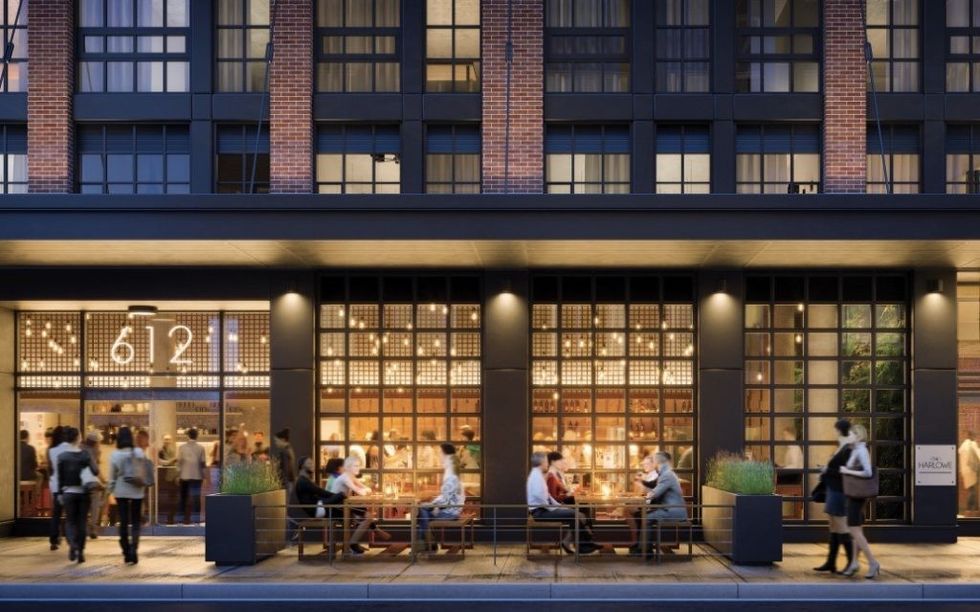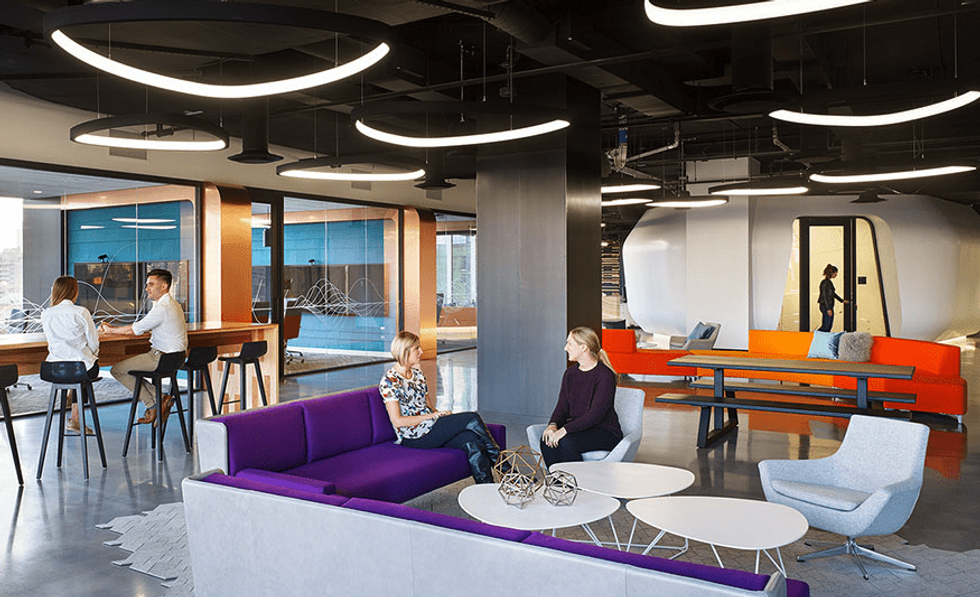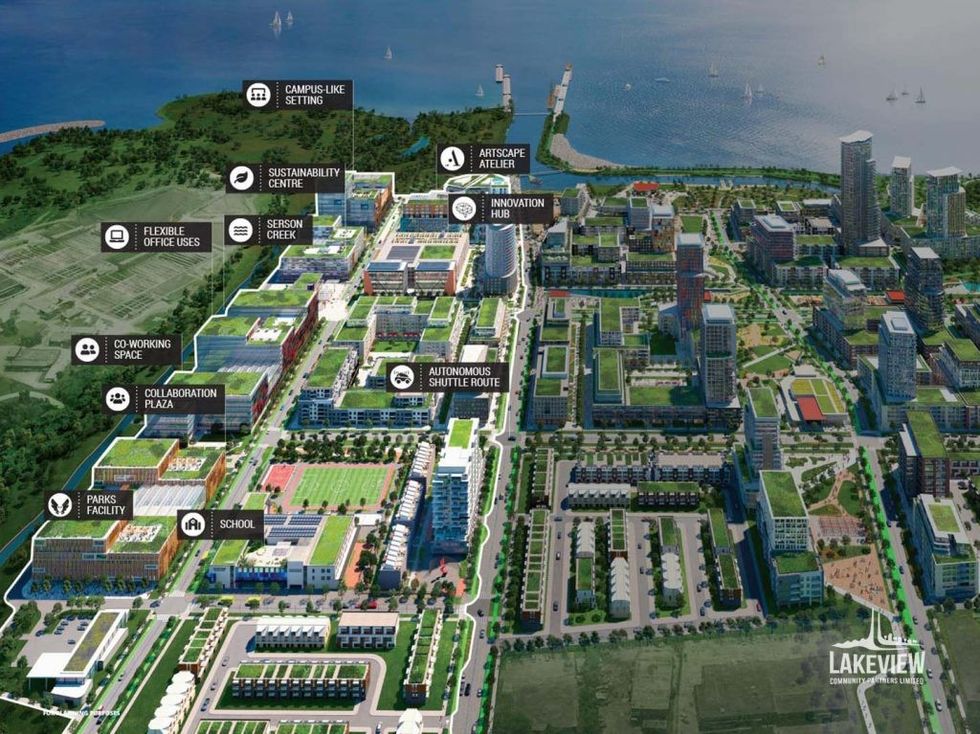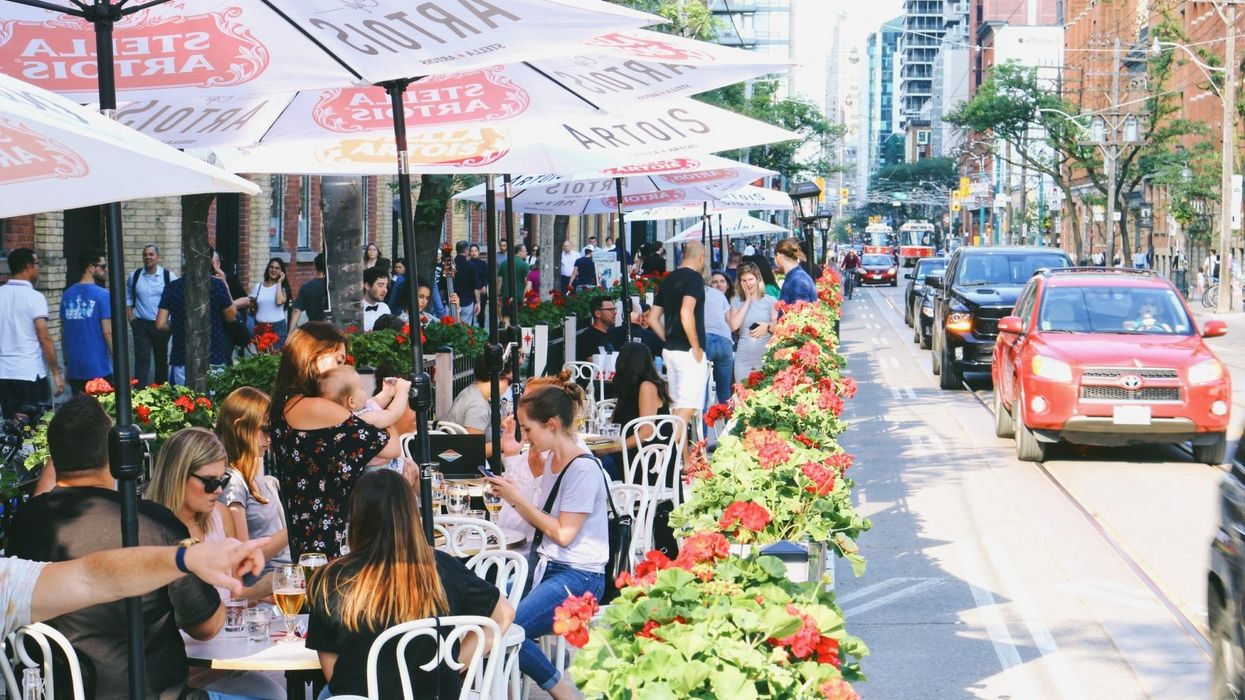Bold brands, flexible design, a focus on human connection and experiences -- retail’s priorities haven’t changed since the pandemic, they’ve just rocketed into high gear.
“The future economy just came 10 years faster,” says Jameel AJ Manji, vice-president of Impact Equity, a niche commercial landlord in King West. “I do feel bad for a lot of retailers that might have just been barely hanging on -- I think if you’re barely hanging on, you don’t have the strategies and budgets to do social media and all these things. So the landscape became extremely competitive.”
Manji first spoke to STOREYS in 2017 about condo retail and how innovation and community context are the big picture -- dollars and cents are secondary details. But today, he points out the that pandemic was brutal for commercial leasing: “For two years my phone didn’t ring.”
Driving around King West’s countless cranes and construction workers reminded Manji of the longterm urban reality: Pandemic or not, everyone is still racing to keep up with scorching demand. Recovery will be brisk.
“Overall, this pandemic has just slowed our growth, it’s taken a step back,” Manji says. “It’s making a lot of people rethink things, which I think is good.”

Phones are buzzing again, he adds. And as the retail landscape recovers, Manji says new players will have to be operating outside the ordinary.
“They have to think like brands, operate like brands -- customer service, digital, everything,” he says. “As entrepreneurs, you just can’t do one thing right anymore. You have to be doing them all right. As a landlord, when I look at a company that I want in my spaces, I want them to be doing it all right. No longer can you just get away with having good food and bad service; it just doesn’t work.”
‘My Crystal Ball Has Shattered’
Fortune favours the bold -- having a brand is one thing, but carving a distinct identity remains the apex.
National and international brands can falter here, says Andrew Gallici, director of retail design at Gensler. Bland corporations create openings for smaller, risk-taking players: “Being bold is going to be really important.”
“A lot of [big brands] are afraid to take a very strong stance -- who they are,” he says. “Are you bold enough to really stand for something? Or are you really timid of alienating people, and hence have this beige personality? Are you trying to be all things to all people? It’s about finding that balance for your organization, as a retailer. Identifying with customer groups is important.”
Next year will be Gallici’s 30th in retail design -- in that time, consider how much has changed in how we shop. Roughly 15 years ago, he says, the conversation shifted more to customer experience and engagement. In the last five years, this shift was seismic. And now?

“When we fast-forward to 2020, 2021, my crystal ball has shattered,” Gallici says. “I find it absolutely fascinating. It’s an exciting time to design. But there are a lot of questions in the air.”
Flexibility in design -- leaving room for evolution -- will be a priority, he predicts. He also expects shorter leases and open-ended plans. One key lesson from the pandemic: How fast can you adapt to survive?
“The easy thing when you’re solution-ing in a time like this is to not overly commit,” Gallici says. “But what the industry also demands of us, and what customers demand of us, are unique and opinionated experiences. It’s still got to be able to evolve and change -- no retailer today wants to spend a ton of money because they don’t necessarily know what the future holds.”
‘A Foundational Connection to People’
Placemaking should pass the blindfold test: Can you drop someone in a neighbourhood, eyes closed, and when the blindfold comes off, do they know where they are?
If you’re successful in building community, creating experiences and connections -- and yes, curating retail -- then they will. Great neighbourhoods are memorable and recognizable.
“Retail helps to create a foundational connection to people,” says Rob Spanier, president of Spanier Group. “We’re all consumers by nature. We like to buy things and we need to buy things to live. But what retail has done -- the retail that I love, which is the best-in-class, independent, non-nationals, the specialty retail -- it can actually act as a truly vibrant part of your life.”
A connection to people is what we lost during the pandemic -- or at least it was diminished beyond recognition. Even before COVID-19, Spanier loved the smaller, independent retailers for this reason: scrappy startups, local owners, personal connections to customers, a “pride of craft” in their products and services.
These entrepreneurs have more skin in the game than large chains with high-turnover staff. And this, Spanier says, is where independent retail shines.

“A lot of people like to say there’s a renaissance going on; I think there’s a reset going on,” he says. “You do need to have the commodity retailers to help you -- Costco has done exceptionally well, Walmart’s done exceptionally well, Loblaws and Shoppers have all done well.
“But as we emerge out of COVID, are you going to want to go hang out at a Walmart? Or are you going to go to that local special place, that restaurant, that cafe, that bakery that allows you to say, ‘This is how I identify with a place.’”
Placemaking and community building may be a lofty goal, a thoughtful way to design neighbourhoods for people to live, work and play. But it also makes economic sense, Spanier points out. There’s a reason great neighbourhoods are pricey.
“For projects that I’m working on, like Lakeview and Downsview, I am focusing in on those independent, non-national [retailers] first,” he says. “I believe, not only do they help to create a sense of place, but they also drive visitation interest and success of the development -- sales or rental of the assets that sit above them, which is the residential units, the offices, the institutions that populate them.”
“And as long as you’re committed to ensuring that the outcome of the development has a very focused, intentional and curated approach to including those independents, you’re going to continue to see places that are born in Ontario, that will be of interest not just to Ontarians, but to all those that come to visit our province or our country. I really believe that.”
Cover photo, King Street West circa 2018, courtesy Christian Stokes





















